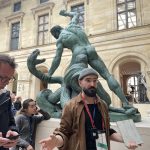Be amazed by ancient Treasures at the Louvre Museum, we selected for you a list of wonders. From Egypt to Mesopotamia and Middle-East.
Ebih-Il
The deep blue eyes of this alabaster statuette freeze the visitors who pass by in its gaze, a gaze that was once enhanced by golden eyebrows. The hands are joined in what could be interpreted as a prayer. Found in the ruins of a temple in the city of Mari, this small statuette bears on its back the name of its sponsor, Ebih Il. It testifies to the intense religiosity of these early Mesopotamian kingdoms, and to their skill as sculptors.
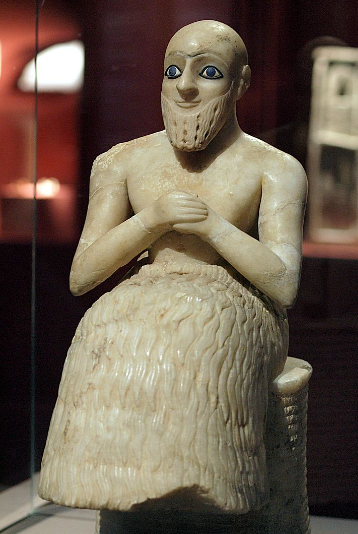
Naram Sin
Naram Sin, king of Akkad, leads the first empire of humanity. His authority of a new and disproportionate scale is expressed by his imposing size, his brutally dominating attitude, the violence of his blows to the enemies who fall from the mountain, pile up under his feet, or beg to be spared. The horns on his helmet are the undeniable sign of his divinity, as is his movement of elevation above men, and close to the gods, incarnated by three suns.
Code of Hammurabi
Thirty-seven centuries ago, one of the greatest kings of Babylonia, Hammurabi, engraved on a large black basalt stele what is considered one of the first constitutions of mankind. Article after article, he describes in detail the royal decisions he made in the name of a new kind of justice, seeking to regulate violence and avoid destructive spirals of revenge. The text will continue to be copied, long after the end of his reign, testifying to the exceptional influence of this king.
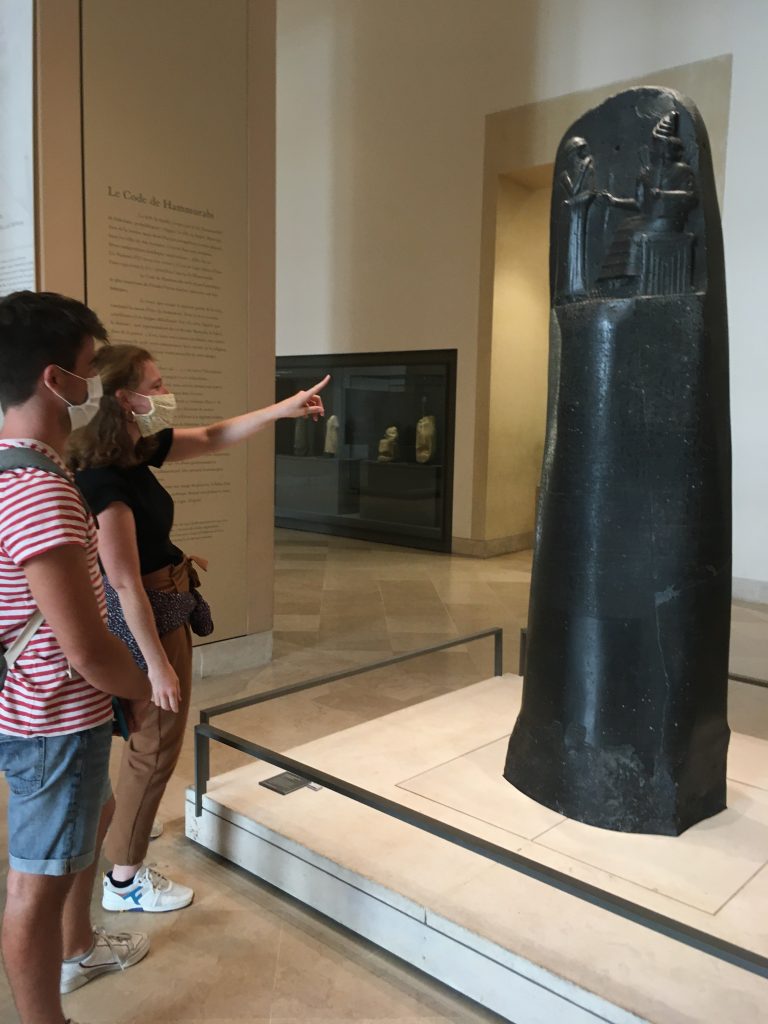
Bulls of Khorsabad
Here is a king and a city worthy of Hollywood’s interest. Sargon is the king of the Assyrians, conqueror of Egypt, the kingdom of Jerusalem and Babylon. In the middle of the desert he raises a new capital, Dur Sharrukin. Building a huge Palace on a 14 m high terrace. Which embodies the inordinate power of a king who did not shrink from any cruelty. The lamasus, bulls with human head, are geniuses who protect the king and the doors of his residence.
However, they did not protect him from his fatal fate: dead in battle and his body lost. He was in the eyes of his people a cursed king who continues to wander between life and death. His son preferred to abandon the city to the desert to appease the anger of the gods. These ruins, first discovery of Mesopotamian antiquities in the middle of the 19th century, started a new passion for the vanished civilizations of Iraq.
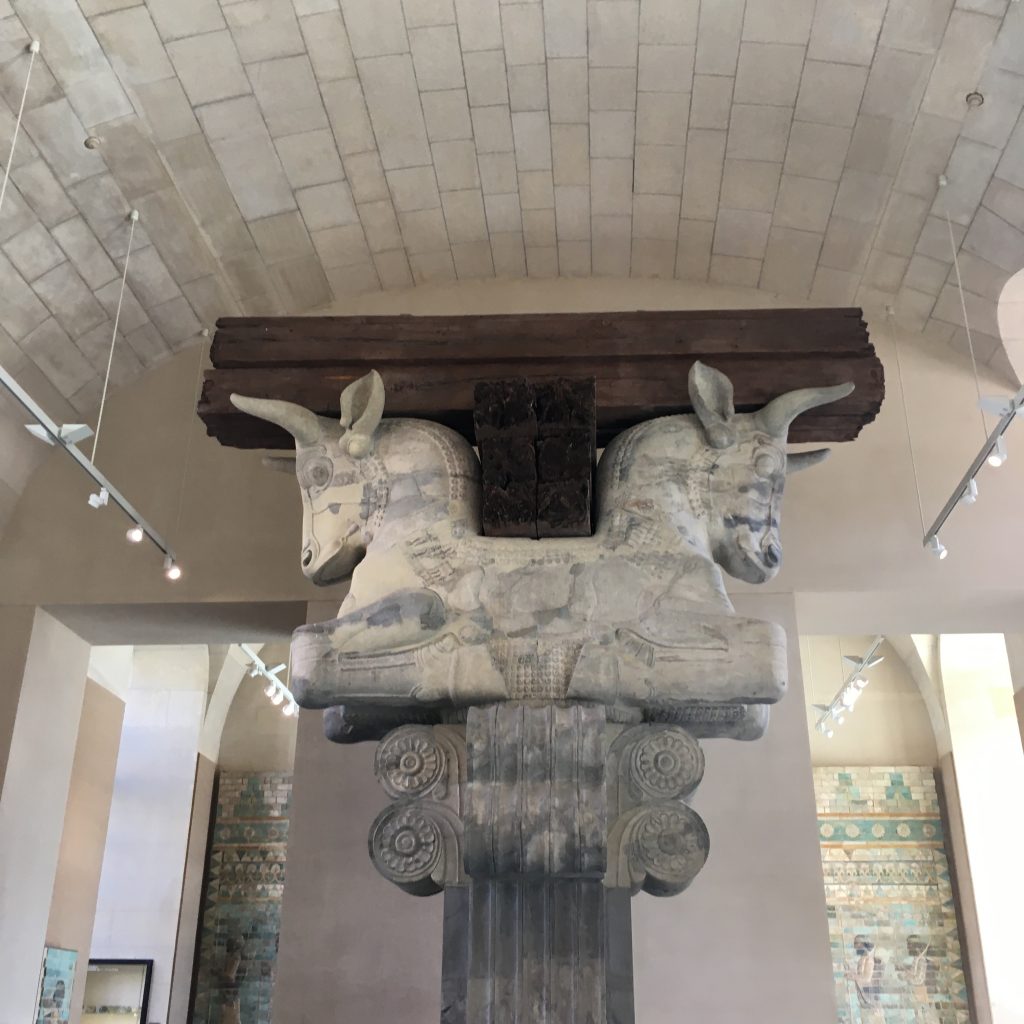
Statue of Ain Ghazal
This is the oldest statue in the Louvre, although it does not actually belong to the museum, but is on loan from Jordan. Nine thousand years old, it is the echo of a world that does not write. That is just beginning to settle in budding cities like Jericho. The plaster that remains of the statue today required firing at a temperature of 700°C, 1300 farhenheit. Another proof that pre-history was not a world of ignorant savages ! But a teeming ballet of human groups already practicing a complex and sophisticated craft.
The Gebel el Arak dagger
Probably one of my favorite artifacts. This dagger comes from prehistoric Egypt, an Egypt without pharaoh and without pyramid. The finesse of the carving work is nevertheless staggering: while on one side, animal fights are concluded by the powerful domination of a man strangling two lions, the second side exposes a merciless fight between two groups of men, some with long hair, others with shaven heads. The latter, defeated, drown in the Nile, already central to the mental universe of the Egyptians. Could this be the representation of the unification of the two Egyptians, the prelude to the millennial kingdom of the pharaohs? The interpretation remains free.
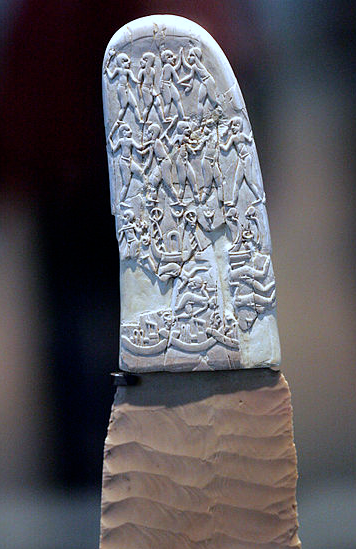
Stele of the princess Nefertiabet
This funerary stele representing the meal of the princess in the other world, is found not far from the great pyramids of Giza. It is rare to benefit from the sublime colors of the Old Kingdom. The hieroglyphs are so ancient that they are still almost like pictograms, and can even be read without having to speak their language. Thus, on the table lining the breads, one can see a plate of ribs, a bowl of cereals, and poultry ensuring that the deceased will never go hungry.
Crouching scribe
Masterpiece of the museum, the visitors are however rare to reach him. This scribe is more than four millennia removed from us: his glass eyes seem more alive than ever. The chubby curves are the expression of wealth in a world where the floods of the capricious Nile cause many famines. The scribes are not simple clerks: they are the elite of the country, the rare owners of written knowledge. This man, who remains anonymous, is most likely a nobleman of very high rank.
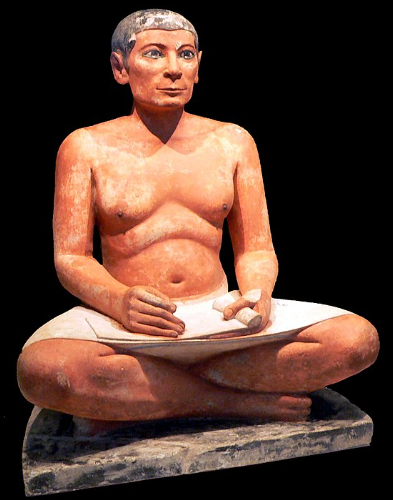
Bust of Akhenaton
One recognizes the strange forms of the Heretic Pharaoh between all. The rebounded belly, the feminine hips, the strangely deformed faces…
Akhenaten is a pharaoh of the New Kingdom, in the 12th century BC. In the fifth year of his reign, he undertakes a religious reform of the kingdom that the Egyptians had never known. He devotes all his religious activity to one God: Aten. The other deities are relegated to the second rank, or worse, systematically destroyed. The necropolis of the pharaohs is abandoned for a new city, Amarna.
This form of monotheism is a terrible upheaval: the successors of the heretic pharaoh will not forgive him. The representations of the heretic pharaoh will be systematically destroyed. He will however leave famous children: Tutankhamun on the one hand, married to his sister Meritaton, also visible in the room, and nkhesenamon, the princess of the movie: The Mummy.

Darius Palace
Six centuries before our era, on the heights of the plateaus bordering Mesopotamia, a new civilization flourished. Everything distinguishes them from their neighbors in Iraq: their language, their religion, their art. The names of their kings sound like those who built the greatest empire of the time: the Persian Empire. Here you are in the palace of one of the most sublime of them: Darius. Admire the authentic colors preserved by the firing of pigments, in the manner of earthenware.
The procession of the royal guards covered with precious cloth and magnificent jewels have, already at that time, dazzled the Greeks. Admire the virtuosity of the Persian jewelers in the showcase. However, there are only a few centuries left to this empire extended from the borders of Afghanistan to the sunny shores of the Mediterranean, before a Macedonian king comes to break down their doors: Alexander the Great.
The dog of Susa
And it is very difficult to find, it is however largely worth that one makes the effort of it. This little golden dog, pendant of a disappeared necklace, created five thousand years ago, is quite simply the oldest solder of humanity. In prehistoric times, these men were already able to maintain a class of jewelers, whose curiosity led them to understand the different temperatures of fusion, according to the alloys of different metals. By mixing silver and copper with gold, they made the solder necessary to attach the small hook to the back of the dog. This is the smallest object in our selection, but it is of revolutionary interest from the point of view of the history of technology.
Bust of Sesostris III
Here is a very strange couple: two busts of the same pharaoh, one young and the other old. Sesostris III was one of the most glorious pharaohs of his time, during the Middle Kingdom. He was the conqueror of Nubia in the south. And also the conqueror of the cities of the Lebanese coast in the north. Is it the exercise of power that weighs so heavily on his tired face? Nothing is less sure: it is much more the wisdom of years that the pharaoh wants to boast here. His large ears prove his capacity to listen. And his dark and pessimistic mouth marks his disappointment of the ingratitude of men. The Egyptians don’t care about realism: it is only the incarnation of a political ideology.
If you want to visit the wonderful Louvre museum, book here.
If you want to know more about activities in Paris, don’t forget to drop us a line at contact@myprivateparis.com !
Article written by Romain.

